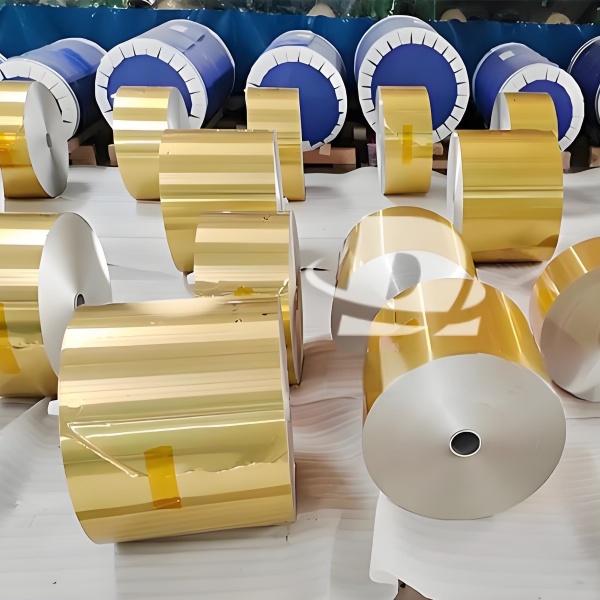Aluminum foil is a popular packaging material. Aluminum foil Features: Non-toxic, with excellent thermal conductivity and light-shielding performance; moisture-proof, air-proof, fresh-keeping.
In the field of modern printing, aluminum foil products used as printing materials mainly include:Aluminum foil, aluminum foil composite material, aluminized material, etc.
The most common aluminum foil composite is aluminum foil paper. Today, Sonia introduces the printing process of aluminum foil.
Aluminum foil is a kind of high-grade packaging paper. It can replace a large area of anodized aluminum hot stamping. The product is colorful, which not only improves the grade of the product, but also increases the added value of the product.
Aluminized paper has been used as an environmentally friendly new material in some developed countries and is widely used in product packaging. It has also become a development trend in China.
Structure of aluminum foil
Composite aluminum foil paper is mainly composed of paper base (aluminum foil backing paper), aluminum foil, and coating layer.
Aluminum foil interlining paper: It is a kind of processing paper with higher requirements, and the quantitative range is 21 ~ 50 g / m2.
Aluminum foil: Rolled from metal aluminum.
Properties of aluminum foil
First: It has a smooth surface, which is not conducive to the transfer and absorption of ink.The aluminum foil layer has a tight structure, almost no voids on the surface, and does not have the absorption and permeability properties of paper. Therefore, the binder, solvent, and moisture in the ink layer after printing cannot be absorbed and stay on the surface of the aluminum foil, which affects the initial drying speed of the ink layer and causes stains on the print.
Second: The physical properties of aluminum foil paper are different due to the density, strength and stability between the surface aluminum foil layer and the backing paper.The two materials with different properties are compounded together, the expansion and contraction are inconsistent, and they are susceptible to ambient temperature and humidity. Affects curled.
When the water content in the ambient air is greater than the water content in the backing paper, the backing paper is hygroscopic and stretches, and the aluminum foil is curled toward the foil surface;
When the water content in the ambient air is less than the water content in the stabilizer, the stabilizer is dehydrated and shrinks, and the aluminum foil is curled toward the stabilizer.





